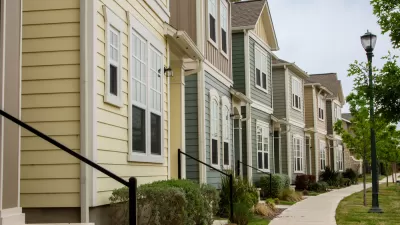More first-time, energy-conscious, urban home buyers with smaller households have contributed to a noticeable reduction in home size as shown in 2008-2009 housing Census data. Concurrently, lower-priced home sales outpaced more expensive homes.
Thirty years ago homes averaged 1700 sq. ft. Nonetheless, the 50 ft. drop to 2,422 sq.ft. from 2008-2009 is considered significant as home sizes had been increasing steadily.
"(T)he data do not indicate that buyers are looking for smaller homes because they think small is beautiful," Philadelphia economist Kevin Gillen, vice president of Econsult Corp, said. "Rather, they want homes that are more energy-efficient, with a more urban location and with fewer bedrooms, and that all naturally translates into a smaller home."
"On average, home sales for less than $350,000 have increased 12 percent year-over-year during the months since January 2009, while sales of houses priced from $350,000 to $900,000 have decreased 8 percent, said Michael Feder, president and CEO of Radar Logic of New York."
FULL STORY: As housing market shrinks, so does average size of new homes

Planetizen Federal Action Tracker
A weekly monitor of how Trump’s orders and actions are impacting planners and planning in America.

Congressman Proposes Bill to Rename DC Metro “Trump Train”
The Make Autorail Great Again Act would withhold federal funding to the system until the Washington Metropolitan Area Transit Authority (WMATA), rebrands as the Washington Metropolitan Authority for Greater Access (WMAGA).

The Simple Legislative Tool Transforming Vacant Downtowns
In California, Michigan and Georgia, an easy win is bringing dollars — and delight — back to city centers.

The States Losing Rural Delivery Rooms at an Alarming Pace
In some states, as few as 9% of rural hospitals still deliver babies. As a result, rising pre-term births, no adequate pre-term care and "harrowing" close calls are a growing reality.

The Small South Asian Republic Going all in on EVs
Thanks to one simple policy change less than five years ago, 65% of new cars in this Himalayan country are now electric.

DC Backpedals on Bike Lane Protection, Swaps Barriers for Paint
Citing aesthetic concerns, the city is removing the concrete barriers and flexposts that once separated Arizona Avenue cyclists from motor vehicles.
Urban Design for Planners 1: Software Tools
This six-course series explores essential urban design concepts using open source software and equips planners with the tools they need to participate fully in the urban design process.
Planning for Universal Design
Learn the tools for implementing Universal Design in planning regulations.
Smith Gee Studio
City of Charlotte
City of Camden Redevelopment Agency
City of Astoria
Transportation Research & Education Center (TREC) at Portland State University
US High Speed Rail Association
City of Camden Redevelopment Agency
Municipality of Princeton (NJ)




























